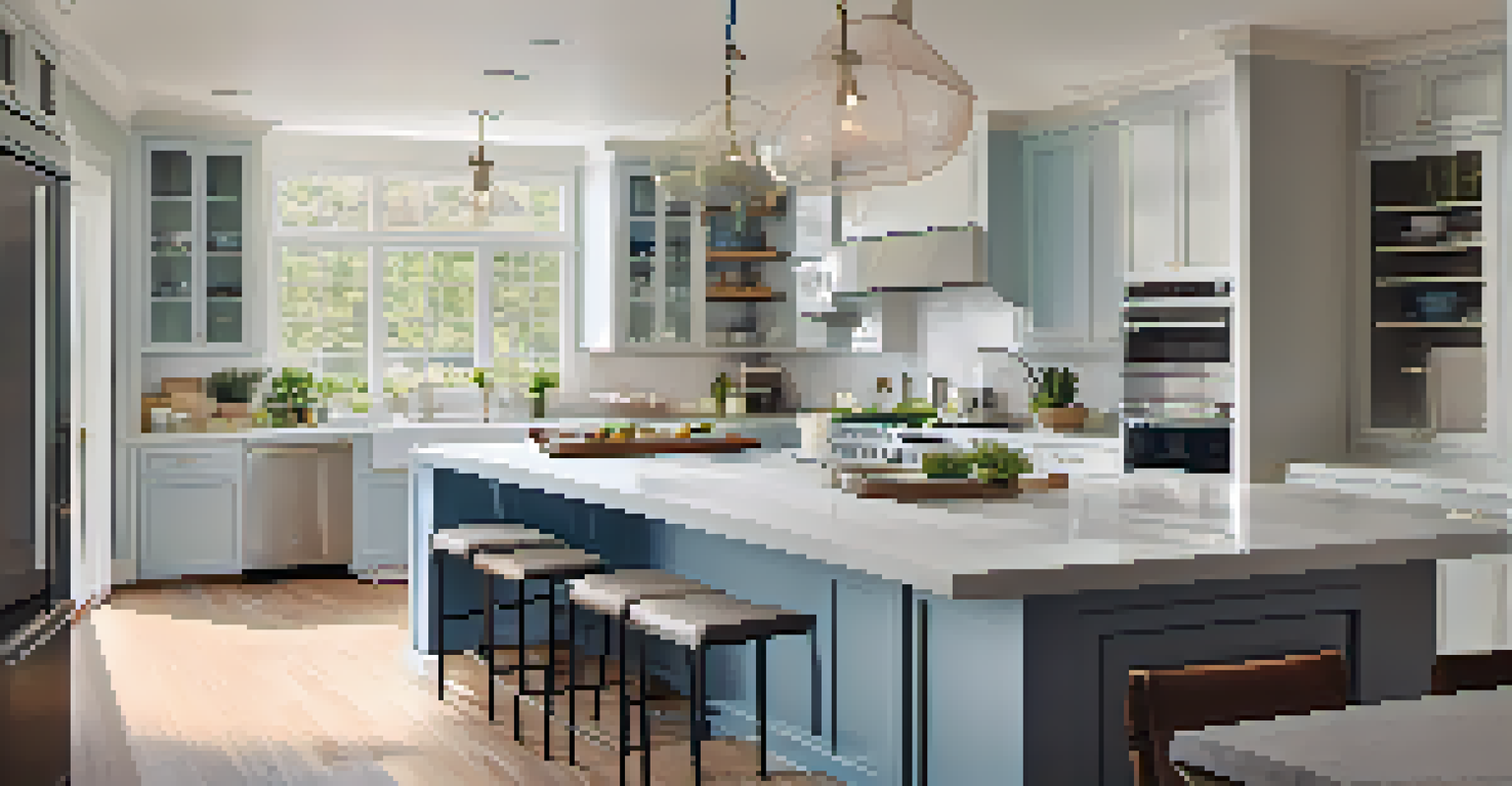Budgeting for Your First Home Flip: A Complete Guide

Understanding the Basics of Home Flipping Budgets
Before diving into your first home flip, it's crucial to grasp the fundamentals of budgeting. A well-planned budget serves as your roadmap, guiding you through the renovation process while keeping your finances in check. Think of it as building a foundation for a house; without it, everything else is likely to crumble.
A budget is telling your money where to go instead of wondering where it went.
Start by determining the maximum amount you’re willing to spend, which includes the purchase price, renovation costs, and any unforeseen expenses. It’s wise to set aside a contingency fund—typically around 10-20% of your overall budget—to cover unexpected surprises that often pop up during renovations. This way, you won’t be caught off guard if a leaky roof or outdated plumbing decides to make an appearance.
Remember, the goal of house flipping is to turn a profit. Keeping a close eye on your budget helps ensure that your investment in the property will yield a return. By tracking your expenses and sticking to your budget, you're setting yourself up for financial success.
Researching Property Costs: What to Consider
When budgeting for a home flip, researching property costs is crucial. This involves not just the purchase price but also the local real estate market trends. Understanding the neighborhood can give you insights into potential resale values, which is essential for determining how much to invest in the property.

Consider factors like proximity to schools, parks, and shopping areas, as these can significantly influence property values. An attractive location can often mean a higher return on your investment, so don’t overlook this aspect. It’s like choosing a prime location for a restaurant; if it’s in the right spot, success is much more likely.
Budgeting is Essential for Flips
A well-planned budget acts as a roadmap for your renovation project, helping to manage costs and avoid financial pitfalls.
Additionally, be aware of the costs associated with the buying process, such as closing costs, inspections, and potential repairs needed before you even begin renovations. These costs can add up quickly and should be factored into your overall budget to avoid any nasty surprises.
Calculating Renovation Costs: A Step-by-Step Approach
Renovation costs can be the most unpredictable part of a home flip, so it’s important to break them down into manageable parts. Start by listing all the areas that need work, from major renovations like kitchens and bathrooms to smaller updates like paint and landscaping. This approach helps create a clearer picture of where your money will go.
The best way to predict the future is to create it.
Next, research the average costs for each type of renovation. Websites like HomeAdvisor and Angie’s List can provide valuable estimates. It’s beneficial to gather multiple quotes from contractors to compare pricing and understand what you can expect to pay. Think of this like shopping for groceries; looking for the best prices can save you a lot in the long run.
Lastly, don’t forget to include permits and inspections in your renovation budget. Depending on your location and the scope of your project, these fees can sometimes be overlooked but should be included to keep your budget accurate. This thorough approach will ensure that no financial stone is left unturned.
Identifying Hidden Costs in the Flipping Process
Hidden costs can derail your home flipping budget if you're not cautious. These are the expenses that often go unnoticed until it’s too late—like utility bills during renovations, property taxes, or insurance. By identifying these potential pitfalls early on, you can adjust your budget accordingly.
For instance, many first-time flippers forget about ongoing utility costs while the property is being renovated. It’s essential to keep the lights on, especially if you’re doing significant work. Just imagine trying to renovate a home without electricity; it would not only slow you down but could also lead to additional costs.
Research Property Costs Wisely
Understanding local market trends and hidden costs can significantly influence your investment decisions and potential returns.
Also, don’t underestimate the importance of property taxes and insurance. These can vary significantly based on the location and condition of the property. Being proactive in understanding these expenses will save you from financial headaches down the line.
Financing Your Home Flip: Options to Explore
Finding the right financing option is a crucial step in budgeting for your home flip. Traditional mortgages might not always be the best choice for flipping due to their lengthy approval processes and strict requirements. Instead, consider alternatives like hard money loans or private lenders, which can provide quicker access to funds.
Hard money loans are backed by the value of the property rather than your credit score, making them a popular choice for many house flippers. However, it’s essential to understand the terms, as these loans often come with higher interest rates. Think of it like a high-speed train; it gets you where you need to go quickly, but it may cost you a bit more.
Additionally, exploring partnerships or investor funding can alleviate some financial burdens. Bringing in a partner means sharing both risks and rewards, but it can also provide the necessary capital to get your project off the ground. This collaborative approach can pave the way for a more successful flip.
Creating a Realistic Timeline for Flipping
A budget isn’t just about dollars; it’s also about time. Creating a realistic timeline for your home flip is essential, as delays can lead to increased costs. Start by outlining all the tasks that need to be completed and estimate how long each will take. This allows you to allocate your budget more effectively.
It's helpful to build some buffer time into your timeline for unexpected delays. Think of this like planning a road trip; it’s wise to account for traffic or detours along the way. This way, you won’t feel rushed and can stick to your budget without the added stress of tight deadlines.
Track Expenses During Renovations
Monitoring your spending in real time ensures you stay within budget and can help adjust costs as necessary.
Additionally, communicate with your contractors and vendors to get their input on timelines. This collaborative approach can help align your expectations and minimize surprises during the renovation process. Open communication is key to staying on track.
Tracking Expenses During the Renovation Process
Once you've set your budget and timeline, the real work begins. Tracking expenses during the renovation is crucial to ensure you stay within your budget. Use spreadsheets or budgeting apps to monitor your spending in real time, making it easier to see where your money is going.
Regularly reviewing your expenses allows you to identify areas where you might be overspending. If you notice you're exceeding your budget in one category, you can make adjustments in other areas to balance things out. This approach is akin to keeping a scorecard during a game; it helps you stay competitive and on track to win.

Don’t forget to document every receipt and invoice, as this will help when it’s time to review your overall costs. Keeping meticulous records not only helps with your current project but also provides valuable insights for future flips. A well-documented budget can be a valuable tool for continuous improvement.